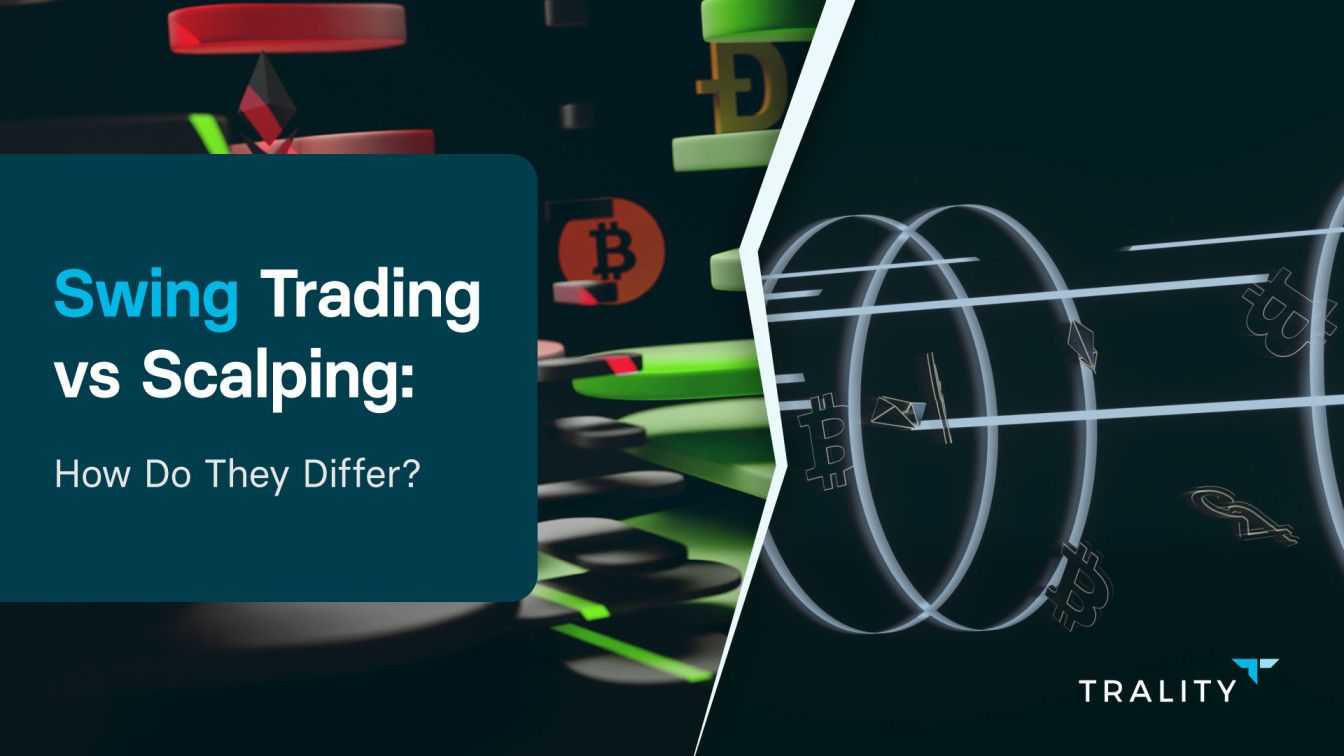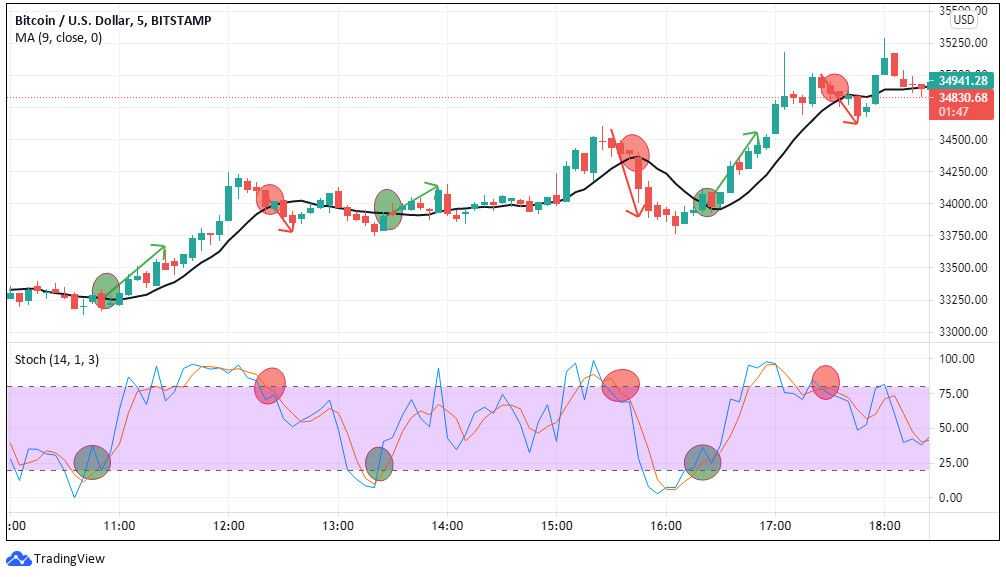Swing Trading vs Scalping: How Do They Differ?

MORITZ PUTZHAMMER
30 November 2022 • 7 min read

Table of contents
On the very first page of the introduction to his book Forex Price Action Scalping, Bob Volman evocatively encapsulates the pitfalls of an ad hoc approach to swing trading and scalping. As he writes,
“Ever since the days of old, the markets have suffered no shortage of volunteers ready to sacrifice themselves on the ever-growing battlefields of supply and demand. Fortune-hunters, plungers, gamblers, misfits, and a motley crew of optimists and adventurers, all have roamed, and will continue to roam, the marketplace in search for quick-and-easy gains. Yet no other venture has led to more carnage of capital, more broken dreams and shattered hopes, than the act of reckless speculation.”
For those open to its lessons, the past year has taught us the values of due diligence, doing your own research, and having a well-honed approach to trading in all market conditions.
Manual traders who dabble in various types of trading, from day trading, arbitrage, margin trading, scalping, and position, quickly crash and burn. A hit-and-run approach to trading is inconsistent, unreliable, and, more importantly, costly. Note that we specifically used the word “dabble.” All of the aforementioned trading strategies can and are profitable when approached with rigor, respect, and a healthy dose of reality.
In the following article, we’ll compare two specific trading strategies, swing trading and scalping, in an effort to tease out some of the finer points of each one.
What is Swing Trading?
As we’ve written in our introductory guide to swing trading crypto, crypto markets move in cycles, which is to say that there will be price swings during any given period of time. The point of swing trading is to profit from those swings, particularly over the course of a shorter period of time such as a few days to a few weeks. Anything longer puts you into position trading territory, while anything shorter means that you’ll be engaging in what is referred to as “intraday” or simply “day” trading.
Obviously, swing trading is a short-term trading strategy, and, as such, traders make good use of fundamental and technical analysis in order to best predict the points at which the price of any given cryptocurrency will swing. Optimal trade entry and exit points are identified; the trading strategy is backtested and optimized; and paper trading will gauge its potential efficacy before any actual money is put on the line.
Traders rely quite heavily on a range of technical indicators for swing trading, including moving averages (e.g., Exponential Moving Average or EMA), Relative Strength Index (RSI), Fibonacci retracement tool, and Bollinger Bands. Typical trading time frames on which traders rely are four-hour charts (4H) and daily charts (D1), and Binance is seen by many as the obvious choice for a trusted, reliable, and flexible centralized crypto trading exchange.
Benefits and Drawbacks of Swing Trading
As with any trading strategy, there are advantages and disadvantages to weigh when considering whether or not to add it to your trading toolbox.
In the first instance, it can never hurt to familiarize yourself with the mechanics of a given trading strategy, testing out indicators and parameters, backtesting, and paper trading everything to see if it’s a good fit for your individual trading style and goals. And since swing trading can be done with a free Binance account using free crypto trading bots made with Trality’s proprietary trading tools, there really is no reason not to give it a test drive.
Advantages of swing trading
Day traders spend a great deal of time at their desks monitoring price movements, something that swing traders don’t necessarily have to do. And when coupled with automated crypto trading bots and a risk management tool such as a stop-loss order, swing trading can provide healthy profits.
Another advantage to swing trading is that it doesn’t involve spending time sifting through large amounts of information related to fundamental analysis. Instead, swing traders rely on a range of technical indicators when evaluating price and volume to pinpoint optimal trade entries and trade exits.
And because you’re interested in price fluctuations, swing traders aren’t locked into positions for extended periods of time. We all understand the volatility of crypto markets and have all learned the value of being fleet-footed in terms of switching up trading strategies depending on how the market moves.
Disadvantages of swing trading
Overnight and weekend price gaps mean exposure. The crypto market has no down time, and so swing traders must ensure that they’re capable of mitigating after-hours risk.
Following on from this notion of volatility is the need to pay strict attention to the market, as it can literally turn on a dime. How many people have been caught off guard by the recent developments? Trends are your friend until they’re not. In other words, market reversals can happen in the blink of an eye. Vigilance against seesawing is key.
Short-term gains are all good, but what about the long term? Just imagine if you had bought into BTC years ago. While there are opportunities to be had in the short term, traders shouldn’t lose sight of longer-term trends.
What is Scalping?
Within the spectrum of short-term trading, a strategy known as “scalping” can also be a profitable approach. So just what is scalping?
Whereas your average day trader will typically make five trades each day, crypto scalpers can make a trade in minutes, meaning that they can average hundreds of trades each day. In a sense, crypto scalpers are swing trades since they’re looking to capitalize on price swings, but the movements that catch their eye are often slight when compared to swing traders, which is one reason why scalpers have higher daily trade volume.

In a volatile market such as crypto, skilled scalpers target smaller fluctuations, which can result in not insubstantial yields. The keywords, however, are speed and consistency. If they stand any chance of being successful, scalpers need to be fast and they need to be consistent. Delays, hesitancy, and lagging internet speeds will result in ineffective trading and lost money, as will dabbling in scalping from time to time. And it goes without saying that scalpers need to be chart gurus, capable of pivoting, when necessary, between leverage, range trading, and the bid-ask spread.
Benefits and Drawbacks of Scalping
With the bad comes the good (or with the good comes the bad), and scalping is no different.
While high-frequency trading carries many benefits, it can be challenging for beginners. However, some of the things that make it challenging for newbies can also be seen as perfect training conditions in which to gain experience. In other words, If you can learn to scalp effectively, then you’ll have undergone rigorous training and mastered some fundamental trading techniques as well as the ability to keep your emotions in check while under stress.
Let’s review some of the advantages and disadvantages of scalping below.
Advantages of scalping
For traders interested in short-term profits, scalping can be a good option (provided you actually make profitable trades). Unlike position trading or even swing trading, you’re not locked into positions for a long period of time.
Small trades mean lower risk. It’s unlikely that you’ll break the bank when scalping because your position size will be comparatively smaller than it would be if you were using a different trading strategy.
Given the sheer volume of daily trades, scalping is ideally paired with automated crypto trading bots. Manual trading is a fool’s game, especially so when engaging in crypto scalping.
Perhaps most importantly, as mentioned above, scalping is often an excellent training ground of sorts to learn the intricacies of trading. Scalping crypto tends to be more complex than intraday or swing trading. Once you’ve developed a good understanding of what’s involved, other types of trading strategies will be easier to grasp and indeed execute.
Disadvantages of scalping
One of the downsides is that profits are often minimal, which is why scalpers need to increase the number of their trades to make it worth their while. And while small profits can add up over time, it can be a tedious process for more results-driven traders.
Another problem is noise, or the misleading information that misrepresents or gives a skewed picture of a trend. Since scalpers are on such short time frames, it can be difficult to separate the noise from the actual trend, which can be chaotic in shorter charts.
Scalping requires a certain set of ideal conditions to work, most notably virtually zero lag when it comes to placing and executing orders. All of your stars need to align in this respect. A slow internet connection or another weak link will result in unprofitable trades. And trading fees can add up quickly, too.
Which is Better: Swing Trading or Scalping?
Yes and no. If you’re a novice trader, then scalping isn’t the best way to get started. As mentioned above, it can provide a trading boot camp of sorts, but the reality of high-frequency trading is that it is too demanding for newbies. However, swing trading is a profitable strategy for more seasoned traders—there’s no getting around it.
The key is to know yourself. Do you have the skills, concentration, and patience to monitor incremental price movements that occur in minutes or seconds? If so, then scalping is a good fit. Are you interested in short-term trading over the course of days or weeks without having to be locked into a position for longer periods of time? In this case, swing trading is certainly worth exploring.
Whereas scalping focuses on intraday price fluctuations that occur within an exceptionally brief period of time, swing trading tends to target short-term trends to take profit. There’s less stress and less time involved, making it far more user-friendly for newer traders.
Final Thoughts on Swing Trading and Scalping
Remember Bob Volman, whom we mentioned at the very beginning of this piece? He ends his book on a philosophical note and we thought we’d reproduce it here.
“Methods and strategies are as plentiful as there are traders around and who is to say what works and what not. Just one glance at any chart will lay bare the enormous diversity in opinion and perception. No matter how sound a particular approach is and regardless of its wonderful statistical record, in the bigger scheme of things it is nothing other than a snapshot of personal observation. Whatever seemed evident in the past, the future may and probably will defy it.”
Great traders are neither born nor created.
They create themselves.





